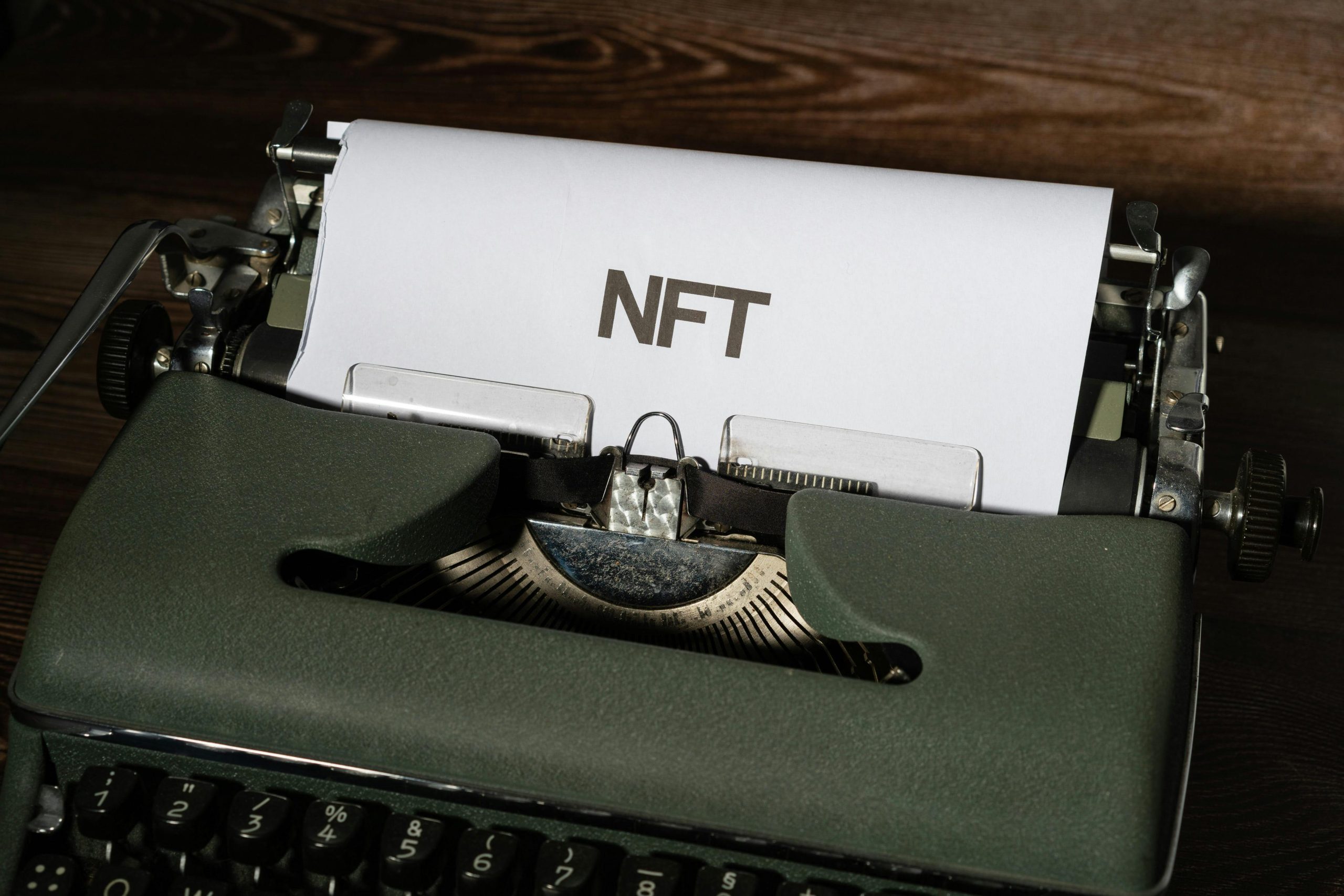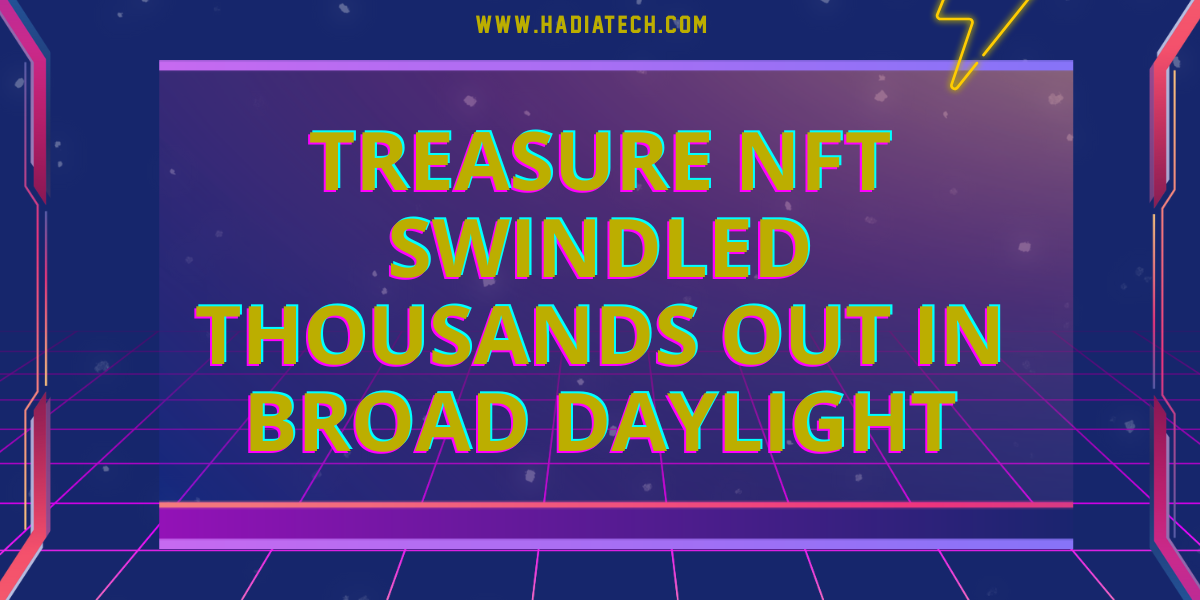How Treasure NFT Swindled Thousands Out in Broad Daylight
The world of cryptocurrency and NFT is thrilling, but it’s also a treasure vault of potential for swindlers. One obvious example is the Treasure NFT scheme, a scam that swindled thousands of excited investors out of money with a promise of huge profits.
In this blog, we’ll discuss how Treasure NFT managed to get away with this scam, the red flags that everyone overlooked, the ruinous effect it had on victims, and how you can protect yourself from falling victim to similar tricks. Whether you’re a new NFT buyer or a seasoned investor, you must read this story.

What Was Treasure NFT
Treasure NFT was the disruptor in the NFT sphere. It vowed to utilize artificial intelligence (AI) to buy and sell NFTs and pay astronomical returns for investors. The sales pitch was too good to resist: invest your money, relax, and let the AI do its magic. Who would not want a share of that? Thousands gobbled up the promise, seeking to become rich in the sizzling hot NFT economy.
But the real controversy was much nastier. Treasure NFT wasn’t a real platform—it was a Ponzi scheme dressed up as trendy hipster tech. The Treasure NFT Ponzi scheme rewarded newer investors’ funds to older ones, a pyramid scheme that was guaranteed to collapse.
How the Treasure NFT Scam Worked
And how did Treasure NFT swindle so many individuals? It took a page straight out of the Ponzi scheme playbook. Here’s the rundown:
Big Promises, No Proof: Treasure NFT promised big to investors that its AI-fueled NFT trading would make them wealthy overnight. These were unrealistic promises, but they did promise individuals a rapid fortune.
Referral Bonuses: The scam encouraged members to recruit others, rewarding them for each new investor they recruited. It maintained the flow of money—in until it stopped.
Fake NFT Projects: In order to keep appearances in check, Treasure NFT promoted worthless or non-existent NFT projects. They marketed them as luxury projects, but they were all smoke and mirrors.
Social Media Mania: The scammers hyped social media, false reviews, and false endorsements to the utmost to build credibility. They manipulated Treasure NFT as an investment that no one could possibly live without, manipulating people’s fear of missing out.
Trapped Redemptions: When investors attempted to withdraw, they were confronted with a brick wall. Withdrawal was frozen or flat-out refused, a classic indicator of a Ponzi scheme unraveling.
When the stream of new money slowed down, the Treasure NFT scam came crashing down. Since there were no funds to disperse, the entire enterprise collapsed and left the victims with nothing.
Red Flags You Can’t Ignore
The Treasure NFT scam was not as sneaky as it appeared. With the benefit of hindsight, there were definitive red flags. This is what should have been a red flag:
Too-Good-to-Be-True Returns: Zero-risk guaranteed returns? That’s a scam. Treasure NFT’s guarantees were a textbook case.
No Transparency: Who owned Treasure NFT? What was their AI up to? The site avoided these questions, a huge red flag for any legitimate operation.
Withdrawal Issues: Frozen funds from the early stages were reported by users. If you can’t withdraw your money, something’s amiss.
Referral Pressure: The emphasis on welcoming newcomers is a Ponzi scheme. Real investments do not require a pyramid to function.
Fake NFT Frenzy: Those “exclusive” NFT initiatives? Fake. Scammers prefer to create assets to defraud investors.
These warning signs are your initial point of defense from an NFT scam such as Treasure NFT.

The Fallout: Thousands Affected, Millions Lost
The Treasure NFT rip-off not just broke wallets but broke hearts as well. Thousands of people lost money, some their entire life savings. Losses ranged from a couple of hundred to tens of thousands per victim, by estimates, amounting to millions in total. To others, it was an economic setback from which they could never bounce back.
Apart from the finances, the psychological damage was ruthless. The victims had been deceived, infuriated, and embarrassed to have believed all the glamor. Some had convinced their friends or family members to sign up, only to feel guilty when it all fell apart.
Officialdom is investigating it, and several victims have retained lawyers. But the unfortunate reality is that no one is likely to receive money from an operation such as Treasure NFT. The criminals are probably long gone before anyone discovers what has been happening.
Lessons to Avoid NFT Scams
Treasure NFT scam serves as an eye-opener for anyone trying out NFTs or crypto. Don’t wish to be the next victim? Here’s the way to go:
Dig Deep: Investigate every platform before investing. Read reviews, look at the team, and note whether there is a high success rate. If it smells fishy, move away.
Question Big Returns: High profits with no risk? That’s a fantasy. Real investments come with ups and downs—anyone saying otherwise is lying.
Demand Clarity: Legit platforms explain who they are and how they work. If Treasure NFT had been upfront, it might’ve been exposed sooner.
Test Withdrawals: Can’t pull your money out? That’s a dealbreaker. Test small amounts early to see if the system holds up.
Steer Clear of the Referral Trap
If a website is fixated on hiring, it is likely a Ponzi scheme.
Screen NFT Projects: Deceptive NFT projects are rampant. Make sure they are real, with real artists and worth, before investing.
Armed with these guidelines, you can invest safely while staying away from scams.

Conclusion: Avoid Being Fooled by the NFT
The Treasure NFT scam indicates how simple it is to get scammed in the crazy NFT world. Thousands were taken in by slick promises and hype, only to have their shirts ripped off when reality kicked in. But you don’t need to be one of them.
By paying attention to red flags, doing your research thoroughly, and staying alert, you can avoid such scams as Treasure NFT. The moral: greed is the scammer’s best friend—don’t let it cloud your mind. Be wise, and your money stays in your pocket.




